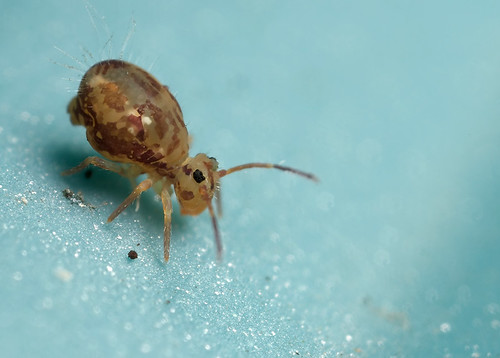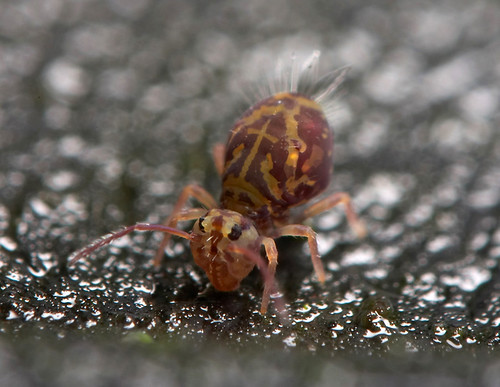Posted by LordV on 29-10-2006 08:19
#1
Just for interest spotted my first globular Springtail of the Winter season Yesterday. I had expected to see giant ones of these during the Summer but they completely disappear- seem to like colder climate. South Coast UK- taken at 4:1
Body length about 1.75 mm
Brian V.

Posted by ChrisR on 29-10-2006 10:41
#2
Looks like
Dicyrtomina ornata (agg). with the '
saundersi' pattern, as identified for me a few years ago by the late, great Steve Hopkin. I was lucky enough to get a draft/test copy of Steve's FSC book "A key to the Springtails of Britain and Ireland"*, so I can at least have a crack at this horrendously difficult group! :)
I'm not sure if Steve ever published the book and I just noticed they have taken down his Collembola mapping site on the Reading University web-servers :( If you do get hold of a copy then be warned - it is very hard to make much progress unless you have a very good microscope (about 100x mag) and you are prepared to make disections and slide mounts of your springtails :D
However, saying that, I don't have such patience and so I resort to the tried and tested technique of "looking at all the pretty pictures until I find one that looks right"! ;)
* Hopkin, S.P. 2000. A key to the Springtails of Britain and Ireland., AIDGAP Test Version, Field Studies Council, p.1-242.
PS: the '
saundersi' pattern is that double comb shape on the end of the abdomen. Some people have split this into 2 distinct species but Steve said that it was probably not a seperate species - just part of
ornata (agg).
Edited by ChrisR on 29-10-2006 10:49
Posted by LordV on 29-10-2006 10:51
#3
Thanks Chris- wasn't expecting an ID on this :)
if that's the "saundersi" pattern any idea what this one is ?
Taken last season.
Brian V.

Posted by ChrisR on 29-10-2006 11:10
#4
I'n mot sure but my guess would be that it's just a heavily marked
D.ornata. It certainly doesn't have the
saundersi pattern. I have had a quick flick though the book and I can't see anything that looks better than
ornata ... but I wouldn't say that's a confident identification! ;)

